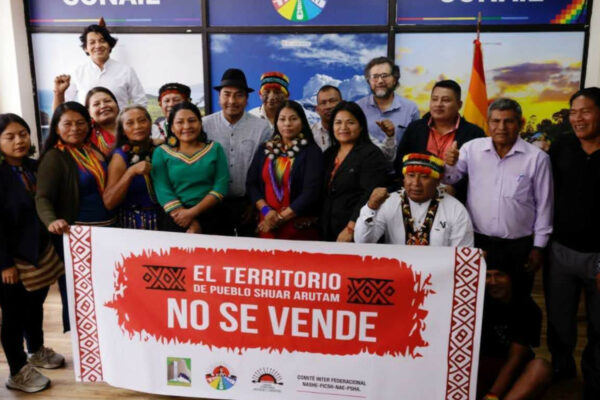LUCAS DO RIO VERDE, BRAZIL – For nearly 20 years, Luiz Alberto Bortolini cleared trees and planted soybeans as fast as he could, one of many pioneers who turned this barren outpost into prosperous farmland.
Now, he and hundreds of other successful farmers are replanting trees as part of an ambitious initiative to reduce deforestation. Their goal – to set aside one-third of their farms for native vegetation – is revolutionary in a region long resistant to environmental controls.
“It had to happen, as soon as possible,” said Bortolini, 50, who now has a 6,200-acre farm. “This is in the farmers’ interests because the farmer is the one most dependent on the environment.”
The initiative, driven by the market and by new pressure from regulators, comes as the government considers proposals to dramatically reduce the rainforest destruction that has made Brazil a leading producer of greenhouse gases. Earlier this month, Brazil said it would cut emissions by up to 38.9 percent from projected 2020 levels, a pledge designed to encourage other countries to take major steps at next month’s global warming summit in Copenhagen.
“I think what they are moving towards is essentially a no-deforestation position by 2030,” said David Cleary, who oversees conservation strategies in Latin America for the Nature Conservancy, an international conservation organization. “It’s way, way beyond any commitment that Brazil has made in deforestation before.”
Already, deforestation has fallen by half in Brazil since 2006, as the threat of sanctions against ranchers and better enforcement of environmental regulations curbed the fires and chain saws used to raze trees across the world’s biggest rainforest.
Still, a swath of forest the size of Connecticut was destroyed last year. Environmentalists also worry about road-paving projects in the Amazon and about the construction of hydroelectric dams in the wilds. Meanwhile, a group of lawmakers is lobbying to loosen the country’s forest code, an environmental-protection law that requires farmers in the Amazon to set aside 80 percent of their land for native species.
“This is a good illustration of the stark contradictions at play within Brazil’s business-friendly and conservation-minded policy circles,” said Christian Poirier, Brazil program coordinator for Amazon Watch. Nascent projects such as the town of Lucas’s initiative, he said, are “threatened by forces that seek to dilute the code and by extension dilute Brazil’s commitments to reduce emissions going into Copenhagen.”
But there are communities in Brazil where farmers and ranchers are working with environmentalists to implement projects balancing development with environmental conservation.
They are driven by a new reality: buyers of agricultural products, from soybeans to meat, increasingly require producers to certify environmentally friendly practices. Lucas farmers, who sell to multinational giants such as Cargill and Bunge, were quick to understand.
“Farmers there, like farmers anywhere, are quite conservative – they are not environmental angels,” said Cleary of the Nature Conservancy. “But they move when they feel it’s in their interest to move.”
Among the first to take heed in Lucas was Marino Franz, who like many farmers here migrated north from Brazil’s more populous south.
He arrived in 1980 and scraped by as a field hand. Today, he has a 25,000-acre spread and owns a plant that refines soybeans into ethanol. He is also the mayor.
“I noticed the concerns European consumers had regarding the environment,” Franz said. “They were worried about soy imported from Brazil.”
Lucas officials reacted by joining with the Nature Conservancy to develop a proposal to bring farmers in line with forest code regulations, which were rarely observed here and elsewhere in Brazil.
In this region, once a mosaic of savannahs and forests, farmers have to set aside about 35 percent of their land for native vegetation. As an alternative, they can pay to protect unspoiled woodlands far from their state as compensation for past deforestation, an option several farmers said they prefer because of the challenges and costs of replanting trees.
Luciane Bertinatto Copetti, the town’s agriculture and environmental secretary, said authorities first mapped the region’s 670 farms using satellite imagery and then met with each property owner. Those farmers, she said, have collectively agreed to participate in the replanting effort, which began a few months ago.
That farmers would even consider such a proposal – which offers no financial assistance – until recently would have seemed preposterous in a state of hardy individualists.
Barely a generation ago, settlers came here to Mato Grosso, which literally means “thick brush,” encouraged by the government, which offered low-interest loans and cheap land. Many struggled, living in tents and toiling in oven-hot fields, far from railway lines and paved roads.
“When we arrived here, there were no laws so there were no instructions from government institutions,” said Bortolini, the farmer. “Each one did whatever he thought he could do.”
Today, Mato Grosso is an agricultural powerhouse, and Lucas is one of its most prosperous towns.
The population in town hovers above 50,000, twice what it was in 2000, and 485 businesses opened this year. In a way, Lucas could be mistaken for any American farm town – big, wide streets, mom-and-pop stores, new public schools and dealerships selling John Deere tractors.
Among the first farmers to start replanting was Darci Eichelt, 45, who took up here in 1986.
On a recent morning, he drove his pickup truck along a dirt road through green fields of soybeans. He stopped and walked to a clump of trees. A year ago, they were about three feet tall, he said. Now, some have reached 10 feet.
“Can you imagine all this in 10 years?” he said. “It’s going to be beautiful.”













